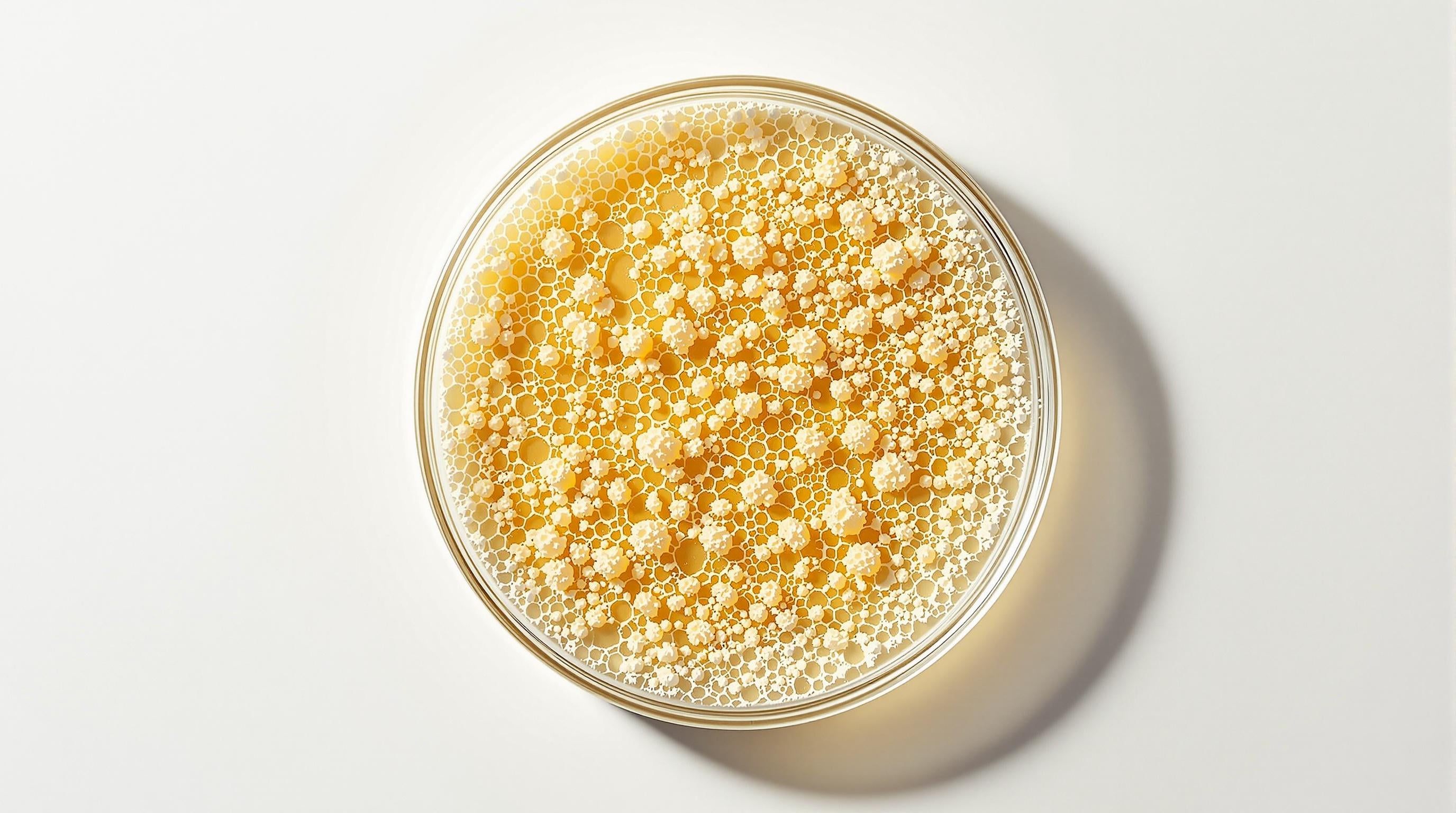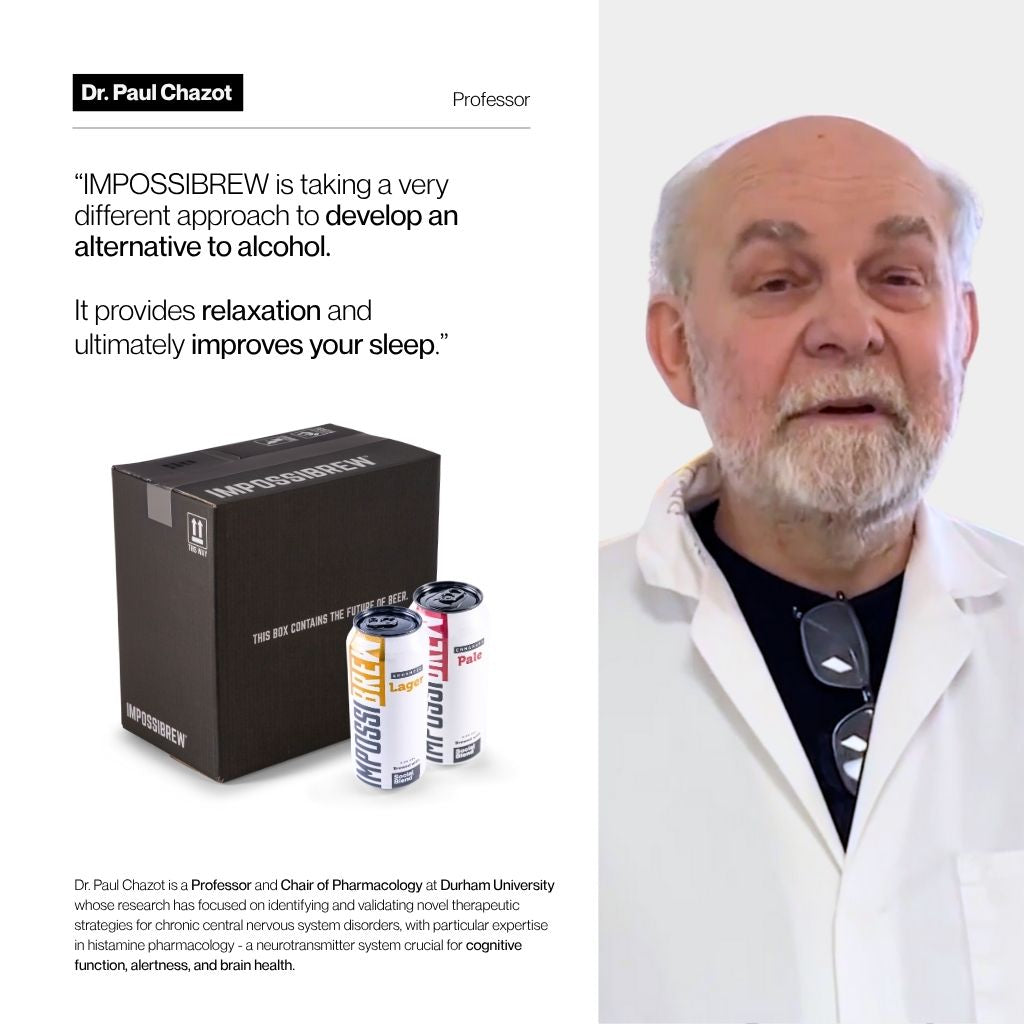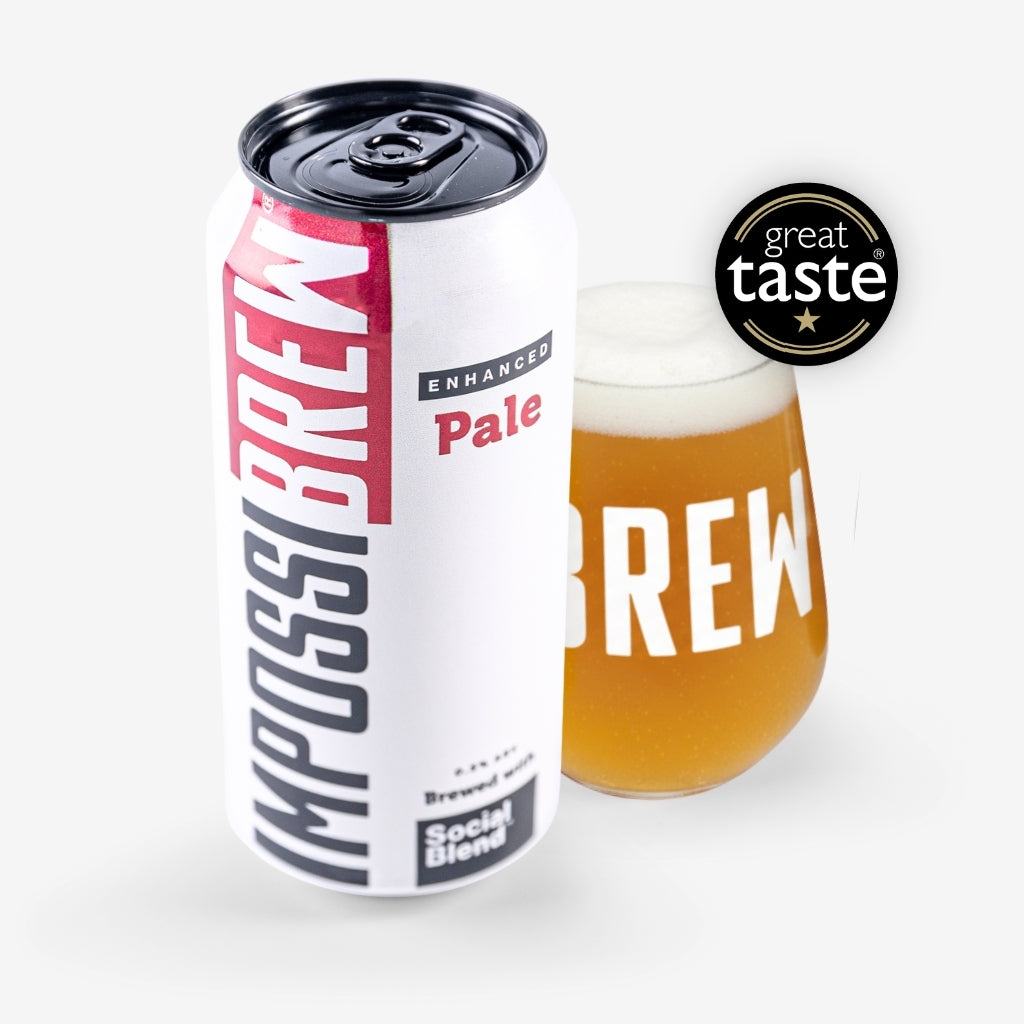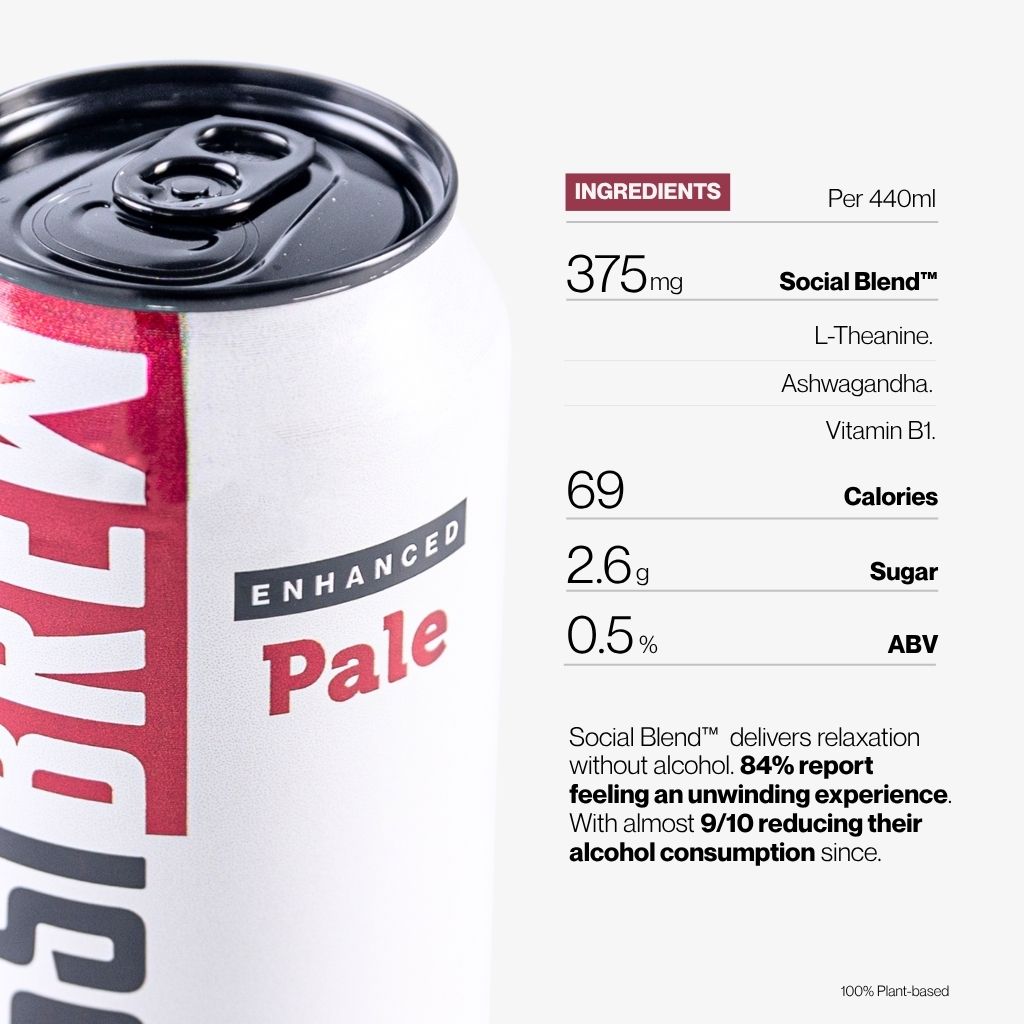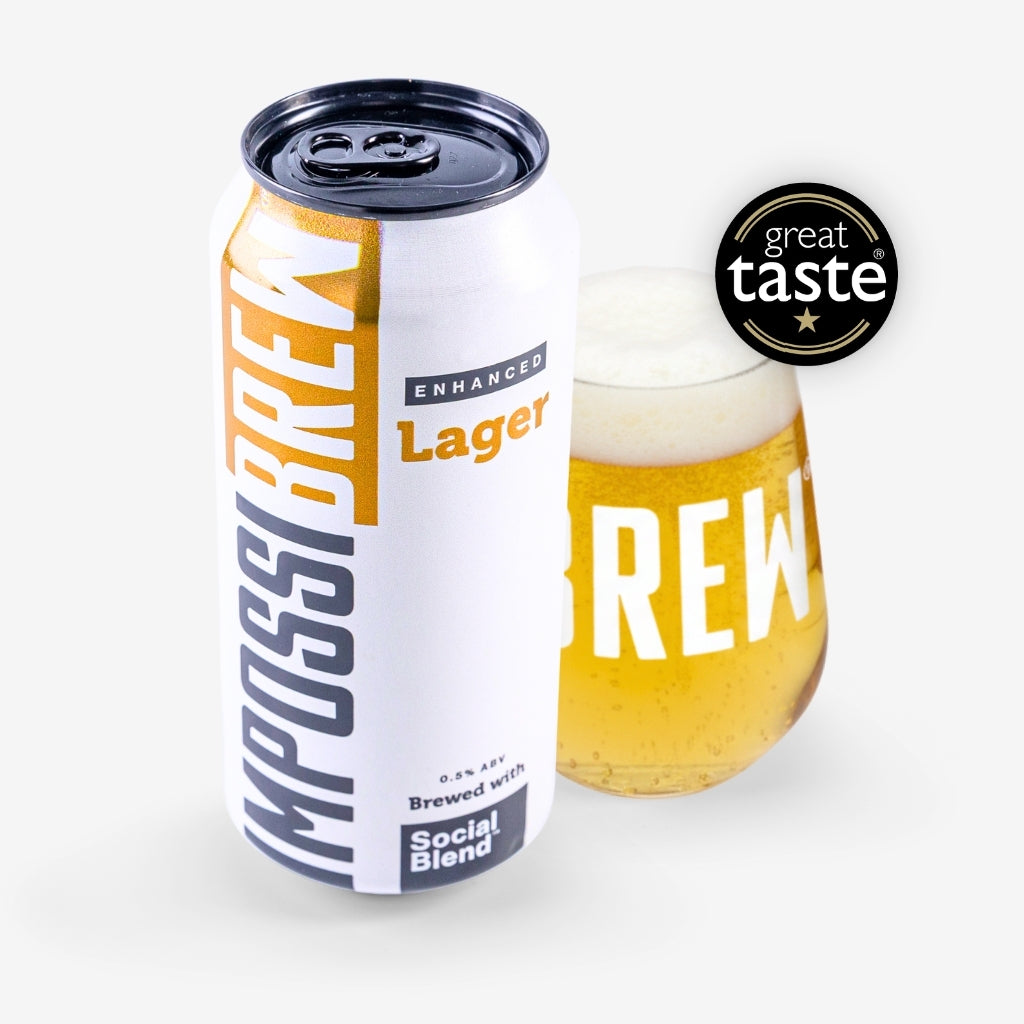History of Social Drinking: A Global Perspective

Social drinking has been part of human life for thousands of years, evolving from ancient rituals to modern wellness-focused trends. Whether it’s sharing sake in Japan, enjoying chicha in the Andes, or toasting with non-alcoholic options today, the act of drinking together has always been about connection.
Here’s a quick overview of how social drinking has changed over time:
- Ancient Beginnings: Fermentation started around 7000 BCE in places like China and Mesopotamia, where alcohol was tied to rituals and daily life.
- Cultural Traditions: From Greek symposia to British pubs, drinking customs shaped communities and reflected local values.
- Industrial Age: Mass production made alcohol widely accessible, while global trade spread regional drinks like Scotch whisky.
- Modern Trends: Non-alcoholic options, like IMPOSSIBREW®, are redefining social drinking, focusing on health and relaxation without alcohol.
Today, social drinking is shifting towards healthier, inclusive options that still foster connection. This change reflects how society balances tradition with modern wellness priorities.
How Alcohol Evolved From Ancient Brews To Global Social Rituals
Early History of Social Drinking
The origins of social drinking trace back to around 7000 BCE, when Neolithic communities discovered the accidental fermentation of fruits and grains.
Early Alcohol Production
The intentional creation of alcohol began independently in various regions. In Mesopotamia, clay tablets from 4000 BCE document beer recipes, showcasing an early understanding of fermentation. Meanwhile, pottery from China’s Henan province (7000-6600 BCE) contains chemical evidence of beverages made from fermented rice, honey, and fruits. In Iran’s Zagros Mountains, findings suggest wine production between 5400-5000 BCE, where clay vessels were used to ferment grapes.
Alcohol in Ancient Rituals
Beer played a key role in ancient Egyptian life, both in religious ceremonies and daily activities. According to legend, Osiris taught brewing. By 2500 BCE, temple records show that workers on construction projects were provided daily beer rations. Similarly, Mesopotamian cultures incorporated alcohol into religious rituals, with the Code of Hammurabi (c. 1750 BCE) detailing regulations on alcohol production and trade.
Greek and Roman Drinking Traditions
The Greeks elevated social drinking through symposia, gatherings that combined intellectual discussion with wine consumption. These events, held in the andron (a men’s dining room), followed specific customs. Participants reclined on couches (klinai) and drank diluted wine, mixed in ratios like 1:2 or 1:3, under the supervision of a symposiarch to ensure moderation.
The Romans adapted these practices into their convivium tradition. Feasts during the Roman Empire (27 BCE – 476 CE) introduced advancements in wine production and storage, such as glass bottles and wooden barrels. Archaeological remains in Pompeii reveal taverns that catered to people from all social classes.
For these ancient societies, alcohol was more than a drink - it was a medium for social connection, political dialogue, and religious expression. These early customs laid the foundation for the drinking traditions that followed.
Drinking Customs Around the World
As societies evolved, drinking habits reflected regional climates, available ingredients, and local traditions.
European Taverns in the Middle Ages
Between 500–1500 CE, medieval taverns were central to community life. In England, the term "pub" - short for public house - appeared in records around 1250 CE. These venues were more than just places to drink; they hosted business discussions, legal meetings, and social events. Ale (unhopped beer) was the primary drink until the 14th century, when hops arrived from mainland Europe, introducing what we now recognise as modern beer.
Drinking Practices in Asia
In Asia, drinking customs were shaped by regional ingredients and traditions. In Japan, the production of sake became standardised during the Nara period (710–794 CE). The practice of kanpai (a toast) became an important ritual, fostering both social and business connections.
In China, baijiu - a spirit made from sorghum - was central to drinking culture. During the Ming Dynasty (1368–1644), elaborate rituals around drinking emerged, celebrating community and tradition.
Native Drinks in the Americas and Pacific
Indigenous communities in the Americas developed unique brewing methods long before European contact. In the Andes, chicha - a fermented drink made from corn - was deeply tied to Incan religious ceremonies and social gatherings.
In the Pacific Islands, kava, a non-alcoholic drink made from the root of the Piper methysticum plant, was consumed during ceremonies. Its preparation and drinking followed strict rules, often reflecting social hierarchies.
Local ingredients and environmental conditions gave rise to distinct traditions worldwide. Today, companies like IMPOSSIBREW® draw inspiration from these practices, creating non-alcoholic options with ingredients like L-Theanine, a compound found in tea leaves that promotes relaxation. This blend of ancient traditions and modern approaches highlights how history continues to shape innovation.
Industrial Age and World Trade
The Industrial Revolution brought a major change to beverage production, moving it from small-scale, handmade processes to large-scale factory systems. This shift ensured consistent quality and made drinks more widely available.
Factory-Made Alcohol
With factory production, alcohol moved from being a craft product to something produced in bulk. This increase in efficiency meant alcohol became cheaper and more accessible, changing how people consumed it socially. Drinking habits shifted as more people could afford and access alcoholic beverages.
International Drink Trading
Mass production, combined with improved transport systems like railways and steamships, helped local drinks find international markets. Regional beverages, such as Scotch whisky, became global products thanks to these advanced trade networks. This global reach showcased how trade and transportation spread a variety of alcoholic drinks worldwide.
sbb-itb-a752bf8
Modern Social Drinking
Today's drinking culture has transformed, blending tradition with new ideas. Social drinking now highlights quality, personal preferences, and varied lifestyles. This shift is reflected in the popularity of craft drinks and the growing demand for alcohol-free options.
Small-Batch Drinks
The craft beverage trend has steered people toward artisanal drinks instead of mass-produced ones. Small-batch producers are known for their distinctive flavours, traditional techniques, and use of local ingredients. The rise of microbreweries and craft distilleries has expanded the drinking scene, offering more choices that cater to contemporary preferences.
Non-Alcoholic Options
Premium alcohol-free drinks are booming as more people look for healthier options without giving up social moments. IMPOSSIBREW® is a standout in this space, having sold over 1 million beers and earning the title of the UK's best non‐alcoholic beer at the 2023 World Beer Awards [1]. Their unique Social Blend™ offers a drinking experience comparable to alcoholic beverages.
"We exist because we believe in a world where social connection doesn't demand compromise." - IMPOSSIBREW [1]
Surveys show that 71% of customers felt more relaxed after trying Social Blend™, and 88% have cut back on alcohol since discovering the brand [1].
World Drinking Patterns
Social media plays a big role in shaping drinking habits worldwide by sharing experiences and introducing new drinks. Brands are using digital platforms to create lively global communities. This mix of old traditions and fresh ideas is reshaping social drinking, allowing both classic alcoholic drinks and creative alternatives to thrive in today’s diverse world.
Health and Society
Drinking habits have long influenced public health and societal norms, reflecting centuries of evolving social practices.
Public Health Effects
Health concerns are steering many towards alcohol-free alternatives. According to IMPOSSIBREW® data, 88% of their customers reduced their alcohol consumption after making the switch to non-alcoholic options [1]. This trend mirrors wider societal changes, where drinking is no longer tied to class distinctions.
Social Class and Drinking
In the past, drinking habits often signified social class. Today, choices around drinking are more influenced by personal health and lifestyle. Premium alcohol-free options, like those offered by IMPOSSIBREW®, are particularly popular among urban professionals who prioritise high-quality products and distinctive sensory experiences. These shifting norms are also shaping how society approaches alcohol addiction.
"We exist because we believe in a world where social connection doesn't demand compromise." - IMPOSSIBREW® [1]
Understanding Alcohol Addiction
Treatment for alcohol addiction now combines medical care with lifestyle-focused interventions. Alcohol-free alternatives, such as IMPOSSIBREW®'s Social Blend™, offer a way to maintain social bonds while reducing the risks associated with alcohol. The medical community is increasingly embracing diverse solutions that support recovery alongside social inclusion. For example, 71% of users report relaxation benefits from alcohol-free options [1].
| Approach | Features | Indicators |
|---|---|---|
| Counselling | Professional and group support | Recovery rates |
| Non-alcoholic Options | Mood-enhancing properties | Reduced consumption |
| Holistic | Medical care paired with lifestyle changes | Social integration |
What's Next for Social Drinking
The way we approach social drinking is changing, shaped by shifting preferences and new technologies.
New Alcohol-Free Drinks
The rise of non-alcoholic beverages has been hard to miss. Take IMPOSSIBREW®, for example, which uses its patent-pending Social Blend™ technology to create alternatives that mimic the social aspects of drinking. These drinks cater to consumers looking for healthier options that still offer functional benefits, without sacrificing the experience [1].
Social Media's Role
As these innovative beverages gain traction, digital platforms like TikTok are amplifying their reach. IMPOSSIBREW® has become a global leader in the No/Low Alcohol category on TikTok [1]. This kind of digital engagement is reshaping how brands interact with their audience, creating communities built on shared values. Interestingly, 95% of customers have shared their experiences with friends after trying these new alternatives [1], showing how word-of-mouth and social media are driving the adoption of these trends.
Future Drinking Trends
The future of social drinking seems to be heading towards more diverse and wellness-focused options. As drink choices evolve, they are aligning more closely with lifestyle and health priorities. Here’s what’s happening now - and what’s coming next:
| Trend | Current Focus | What's Ahead |
|---|---|---|
| Functional Beverages | 71% of users report relaxation benefits | Increasing demand for added effects |
| Health-Conscious Choices | Low-calorie, vegan options dominate | Broader range of specialised drinks |
| Social Connection | 3 out of 4 users rate alternatives as "complete" | Greater emphasis on fostering connections |
The market is moving towards a balance between traditional drinks and alcohol-free alternatives. The success of these enhanced options, highlighted by IMPOSSIBREW®'s multiple Gold awards at the 2023 London Beer Competition, shows a growing appetite for innovation [1].
Conclusion
Social drinking has come a long way, moving from ancient religious practices to today's wide array of beverage options. This shift reflects changing views on health, wellness, and how we connect with others.
Over the centuries, social drinking has undergone many transformations, leading to the rise of modern alternatives. Advances in technology and changing consumer habits are reshaping the way people approach beverages. For instance, the growing popularity of non-alcoholic options, backed by data, highlights a noticeable change in consumption patterns [1].
Today, there’s a clear move towards more inclusive and health-conscious choices. This shift allows people to maintain social connections while focusing on their wellbeing. The combination of scientific advancements and evolving preferences is reshaping how we experience social gatherings.
This ongoing change shows how health-driven alternatives are influencing social drinking. As new options continue to appear, drinking culture will keep evolving to align with modern social and wellness priorities.
Related posts
Next Generation Alcohol-Free Beer
IMPOSSIBREW®: The Enhanced Non-Alcoholic Beer designed as an alternative to full ABV beers using patent-pending technology*.
Enjoy a healthier daily wind down with the beer that matches the taste and feeling of traditional alcohol.
Keep the pleasure and ritual of drinking without worrying about your health.
Get Started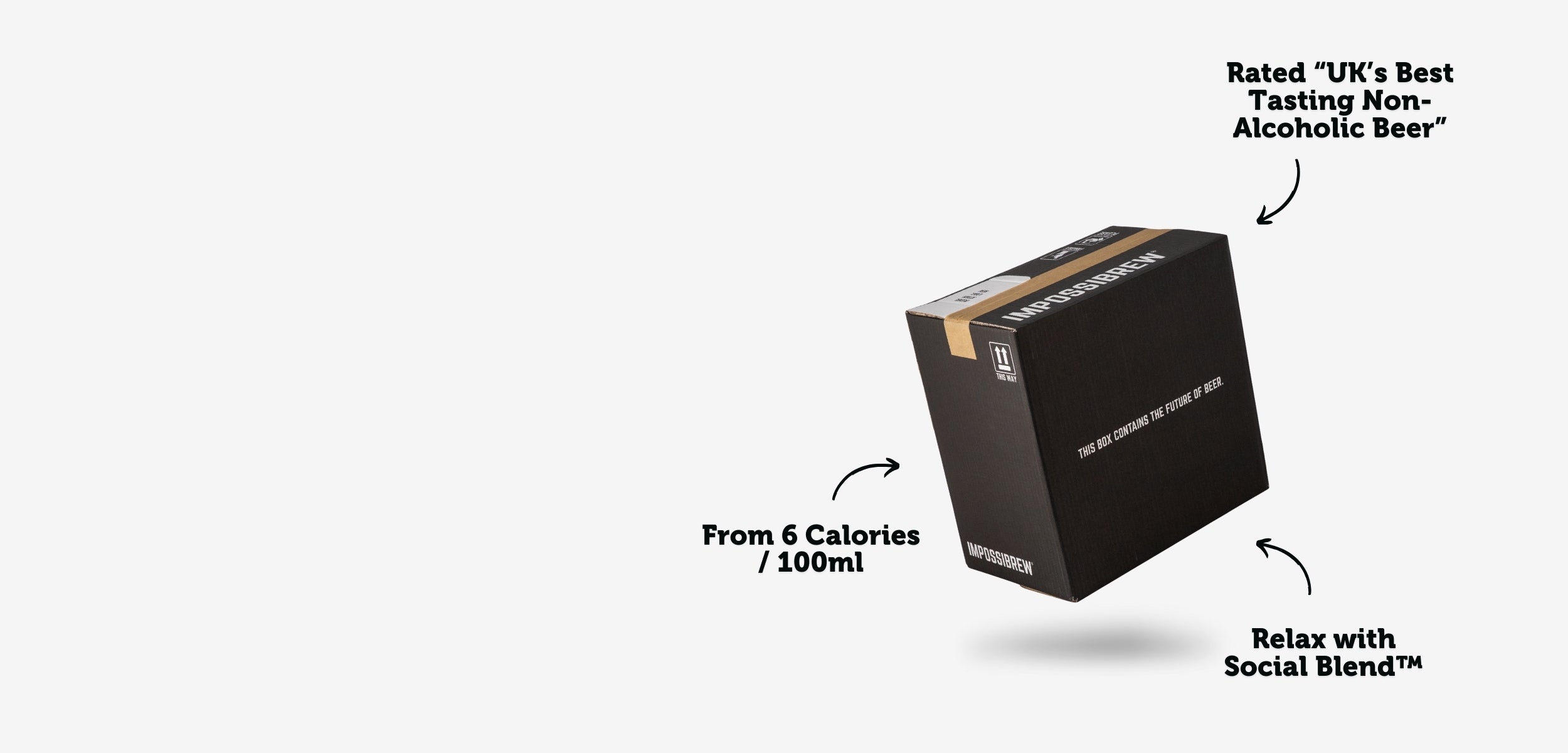
Next Generation Alcohol-Free Beer
IMPOSSIBREW®: The Enhanced Non-Alcoholic Beer designed as an alternative to full ABV beers using patent-pending technology*.
Enjoy a healthier daily wind down with the beer that matches the taste and feeling of traditional alcohol.
Keep the pleasure and ritual of drinking without worrying about your health.
Get StartedAward-winning Taste
Rated "UK's Best Non-Alcoholic Beer" by the prestigious World Beer Awards.
From 16 Calories / 100ml
Low Calorie. Low Carb. Vegan-friendly. <0.5% ABV. Gluten-Free (Lager)
Social Blend™
Our proprietary alcohol alternative made from a blend of science-backed ingredients designed to replicate the sensory, social and relaxing experience of drinking. Read more here.
Got Questions?
Find our most commonly asked questions below or ask our AI Brewer for instant answers.
What is IMPOSSIBREW®?
IMPOSSIBREW® is a pioneering non-alcoholic beer brand based in the UK that aims to create the world's most complete alcohol alternative using patent-pending technology.
Founded by Mark Wong in 2021 and working with some of the world's best professors, scientists and expert brewers, IMPOSSIBREW® specialises in expertly crafted non-alcoholic beers designed to match full ABV beers in both taste and feeling.
Product Range
IMPOSSIBREW® offers a range of enhanced non-alcoholic beers, including:
- Enhanced Lager (0.5% ABV)
- Enhanced Pale Ale (0.5% ABV)
- Limited Editions (Seasonal)
Key Benefits
The key feature that sets IMPOSSIBREW® apart is its proprietary "Social Blend™" - a combination of active botanical ingredients and nootropics using patent-pending technology* designed to recreate the relaxing effects of alcohol without the negative side effects.
Along with record-breaking quality flavour that comes from a unique process without removing alcohol.
Social Blend™ Ingredients
Developed with leading scientists in top UK universities, Social Blend™ includes:
- L-Theanine
- Ashwaghanda
- Soluble Plant Fibres
- Vitamin B1
- Various Plant Extracts.
These ingredients are chosen for their potential to boost serotonin, promote relaxation, and create a calming effect similar to the "one or two pint feeling" without hangovers.
See more details on our very own research paper, with over 1,000 participants:
- More than 70% said they felt relaxed after consuming IMPOSSIBREW®.
- 88% have reduced alcohol consumption since discovering IMPOSSIBREW®.
- 95% have told a friend about IMPOSSIBREW® after trying.
- 3/4 say that IMPOSSIBREW® is "the most complete alcohol alternative currently available on the market today".
Recognition
IMPOSSIBREW® has received several notable achievements:
- Featured on BBC's Dragons' Den
- Awarded the first and only Gold Medal in the No/Low beer category from the London Beer Competition
- Received multiple industry Gold awards in categories against Full-ABV beers
- Most followed No/Low Alcohol brand on TikTok globally.
Mission and Vision
IMPOSSIBREW® is on a mission to redefine non-alcoholic drinking by creating better-than-alcohol alternatives for those who love beer but want to avoid the health risks associated with alcohol consumption.
The company aims to become the global leading alcohol alternative brand, focusing on helping people transition to a healthier mode of relaxation without the traditional issues and side effects of alcohol.
Production and Ingredients
IMPOSSIBREW® combines traditional brewing methods with their proprietary Social Blend™ along with patent-pending technology*
The beers are made with traditional brewing ingredients such as water, malted barley, wheat, hops, and yeast, in addition to the Social Blend™ components - leveraging their unique cryogenic fermentation process, which means no alcohol is ever removed from the product - ensuring the most authentic quality taste you've come to expect.
Who is it for?
IMPOSSIBREW® caters to consumers who:
- Are busy professionals and parents who would like to unwind with a drink but don't want the hangovers.
- Enjoy the taste and relaxing experience of beer
- Are looking for healthier alternatives to alcohol, with lower calories, carbs and sugar
- Want to avoid hangovers and other negative effects of alcohol consumption
- Are interested in functional beverages with potential mood-enhancing properties
By offering a unique product that aims to replicate both the taste and feeling of alcoholic beer, IMPOSSIBREW® is positioning itself at the forefront of the growing non-alcoholic beverage market.
Get Started Today
Give it a try today with our Welcome Bundle and get 2 Free Beers with your first purchase. Get it delivered straight to your door, risk-free with our 30-day money-back guarantee.
We hope you enjoy them as much as we do and we can't wait for you to try.
*Patent pending in the UK under application number GB2415685.3
How does 'Social Blend™' work?
Social Blend™ is our proprietary alcohol alternative made from a blend of science-backed ingredients using patent-pending technology*.
Designed to replicate the sensory and social relaxing experience of drinking, minus the headaches (and bad decisions).
Developed with Dr Paul Chazot, Bioscience Professor and Chair of Pharmacology at Durham University.
Key Components and Mechanisms
- L-Theanine:
- Ashwagandha Root:
- Vitamin B1 (Thiamine):
- Various nootropic herbs:
Benefits
- Relaxation: The blend promotes a state of relaxation without the sedative effects typically associated with alcohol.
- Mental Calm: By boosting alpha brain waves and serotonin levels, it helps maintain a calm and focused mental state.
- Stress Relief: The combination of L-Theanine, Ashwagandha, and Vitamin B1 helps mitigate stress and anxiety.
- Mood Enhancement: The inclusion these ingredients and other botanicals supports mood regulation and overall positive outlook.
IMPOSSIBREW®'s Social Blend™ is a carefully crafted combination of nootropic and adaptogenic ingredients designed to offer a relaxing and mood-enhancing experience without the drawbacks of alcohol. It leverages the natural properties of its components to promote relaxation, reduce stress, and enhance mood, making it a unique alternative to traditional alcoholic beverages.
(Read our latest research paper here)
*Patent pending in the UK under application number GB2415685.3
Do you ship overseas?
We ship to the UK Mainland for free when you spend over £35
We aim to expand internationally soon - stay tuned!
If you have any queries, feel free to email: hello(@)impossibrew.co.uk
How long will it take to get my orders?
For UK mainland deliveries, normal orders processed here will take 1-3 business days to arrive, with an optional upgrade to Next Day Delivery available (12pm cut-off).
Delivery details will be provided in your confirmation email.
How is 0.5% ABV alcohol-free?
Yes, we know it's confusing. Isn't 0.5% ABV still alcoholic? Officially, 0.5% ABV is classified as Dealcoholised.
- In fact, most things we consume daily have more than 0.5% ABV
- Burger Rolls - 1.2% ABV
- Orange Juice - 0.5% ABV
- Ripe Banana - 0.5% ABV
After more than 2 years of research, we've found that the 0.5% ABV from our natural brewing process significantly increases both flavour and mouthfeel - without spiking your blood alcohol level (BAC).
Is it really gluten-free?
Yes, IMPOSSIBREW® Enhanced Lager is gluten-free. Even though it contains wheat and barley, our beers have been third-party tested to contain less than 10 parts per million (PPM) of gluten, which meets the criteria to be listed as, and labeled gluten-free.
Does it have alcohol tax?
No. While it is true that our beers don't contain alcohol, and thus don't incur UK alcohol duty, we'd like to highlight some factors here that might be helpful in reflecting the value we provide.
- One-to-One Brewing Process: At IMPOSSIBREW, we take pride in our unique brewing techniques. Unlike other non-alcoholic beers, our products are never diluted, watered-down, or have their alcohol content removed - and some even dilute their alcoholic beers up to 5x. This means that our brewing process involves the same level of craftsmanship, time, and resources as a traditional craft beer, resulting in comparable production costs.
- Effective Nootropics: In our commitment to creating the most relaxing non-alcoholic beers, we utilise only the highest quality nootropics as our active ingredients, in safe and effectives dosages. At current alcohol tax rates for a 5% ABV beer, the cost of our nootropics more than double that. Instead of contributing the amounts as tax, why not have it contribute to the product quality itself?
- Small Scale Brewing: Currently, we operate on a smaller scale, which makes us less competitive than large, commercial brewers (often +10,000x our brewing size). As a growing business, we are passionate about our mission to create unique, high-quality non-alcoholic experiences, and we truly appreciate your support. As we continue to grow and expand our production capabilities, we look forward to passing on even more savings to our valued community!
At IMPOSSIBREW, we prioritise offering our customers an enhanced, premium, non-alcoholic beer experience by combining innovative brewing techniques, quality active nootropic ingredients, and award-winning taste. While our pricing may differ from other non-alcoholic competitors, we believe that the value proposition and unique experience our beers provide are well worth it.
At the end of the day, tasting is believing. So give it a try and let us know what you think - risk-free with our IMPOSSIBREW® Guarantee.
Who shouldn't drink IMPOSSIBREW®?
It is not recommended for pregnant or breastfeeding women, those with certain medical conditions like GI disorders or hypertension, or individuals taking specific medications such as antidepressants, immunosuppressants or blood thinners. If you fall into any of these categories, it's best to consult with your doctor first.
Ashwagandha can lead to overstimulation (i.e. restlessness) if taken alongside thyroid medication.
What is your philosophy?
For thousands of years, we had only one way to unwind together. One way to let our guards down. One way to bridge the gap between who we are and who we are with others.
Not because it was perfect. But because it was all we had.
We decided that wasn't good enough.
We exist because we believe in a world where social connection doesn't demand compromise.
Where being present with others doesn't mean being absent from yourself. Where letting go doesn't mean losing control.This isn't about removing alcohol. This is about something better.
Our Social Blend™ technology isn't an accident. It's the result of questioning everything we thought we knew about social drinking. About working with scientists to understand what we're really seeking in these moments of connection. About daring to imagine something that wasn't possible before.
We believe the greatest innovations don't just solve problems - they change how we live. They make us question why we ever settled for less.
That's what we're building. Not just a drink, but a new way forward. A future where social connection comes without compromise. Where tradition meets innovation. Where science meets ritual.
This is the future of social drinking.
Got more questions?
Speak to our AI Brewer here for instant answers.
Or email us at hello@impossibrew.co.uk
Our customer support is available Monday to Friday: 9am - 5:30pm.


















